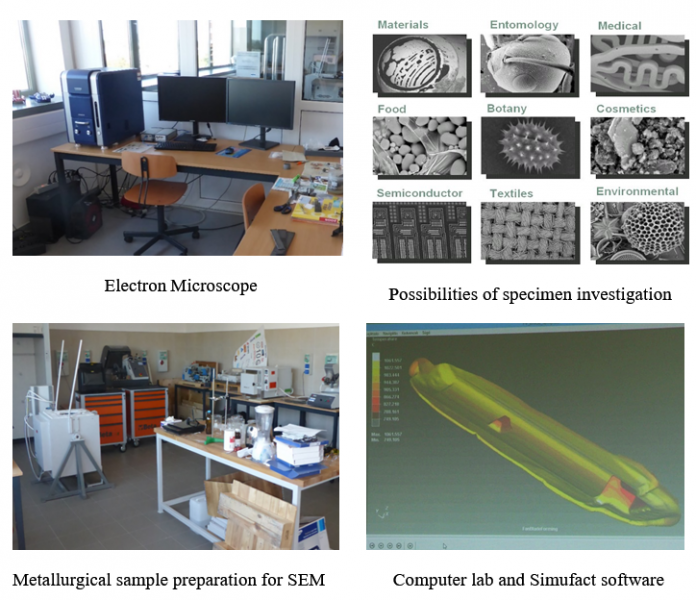Education technologies
Vienna Test System:
We can choose from a wide range of tests covering all aspects of psychological testing - whether it's clinical, sport, aviation, personality, neuroscience or traffic psychology. Using VTS is very simple. Schuhfried GmBH lays great emphasis on the design of the user interface to make it easy to understand and to be consistent. User level skills are sufficient to operate the system. Field of application: Labour and organization psychology, personality psychology, transport psychology, aviation, sports psychology, research
GaBi 4 Life cycle-analysis software
Life cycle analysis are one of the most commonly used tools in management, where companies try to quantify or at least to estimate the environmental impacts of the production, distribution, use, disposal and recycling of a product, including energy expenditure. The analysis takes into account the production, energy supply, transport, storage, utilization stages, waste treatment processes, such as recycling and energy use, as well as residual waste disposal from the mining or production of raw materials. The LCA helps to improve the validity of decisions, and reveal the crucial factors and relationships.
Microsoft Project Professional 2010:
Microsoft Office Project Professional 2010 provides high-performance project management services. Provides continuous information - supervises project work, schedules, and finances - as well as co-ordinating members of the project team.
Material Testing
 Smart Materials Research Laboratory - Materials Technology Laboratory
Smart Materials Research Laboratory - Materials Technology Laboratory
The laboratory has a dual purpose. On the one hand it serves the need of teaching as practical courses like Materials Science and Technology of Structural Materials are held here. The laboratory also functions as a classroom for small-group studies. On the other hand it is a real research lab which develops brand new metal matrix composites and investigates material properties, for instance the rheological parameters of fluids.
The laboratory is equipped with the following test machines:
• Hitachi TM3030 Tabletop Electron Microscope + Bruker EDS detector,
• Metallurgical sample preparation for SEM (Scanning Electron Microscopy) and Mechanical Workshops,
• Computer lab and Simufact software for deformation modelling and simulation.
Basic performance of SEM
• The TM3030 is equipped with premium signal detectors which have been incorporated in FE-SEM and VP-SEM and provide unparalleled image quality.
• The detectors can effectively be operated under low-vacuum conditions and support SE and BSE image observation without metal coating.
• The TM3030 can be used to observe BSE images with a magnification from 15x up to 30,000x.
Scalability
• The TM3030/TM3030 Plus offers a variety of optional accessories including EDX, 3D view software, various stages and more.
• Quick X-ray analysis with a wide detection area (30mm2) is possible. Also, multiple-element analysis, such as Point/Area analysis, line scan and element mapping can be performed.
User-friendliness
• Incredibly simple operation with powerful automatic functions.
• Controlled from either a laptop or a PC.
• No troublesome alignment necessary. Eliminating observation conditions has made the TM3030/3030Plus easy-to-use systems for anyone and anywhere.
 Computer Laboratory and SIMUFACT software for deformation modelling and simulation
Computer Laboratory and SIMUFACT software for deformation modelling and simulation
User-defined parameters: With user-friendly mathematical formulas users can now generate their own parameters based on those of the simulation. This function simplifies the post-processing needed when examining the variables in the design process. Routine designs can automatically be evaluated, which substantially cuts down the time taken to find the best design for the manufacturing process.
Tracking post particles: Post particle tracking helps users find the causes for typical mistakes in a massive forming process. Post particles are user-defined measuring points for the parameters. The user can define them after the actual simulation during post-processing and all process steps whilst running the simulation both forward and backward.
Mechanical joining improvements: Users applying Simufact.forming for the simulation of mechanical joining profit from several new developments. The special parameters used in hollow self-pierce riveting processes are automatically determined and shown. Users can quickly evaluate the highly realistic results of the simulation at the touch of a button. Furthermore, predefined templates now support the design of self-pierce riveting processes.
Shared-memory parallelization: The more powerful shared-memory parallelization (SMP) replaces multiple-threading parallelization. SMP reduces computation times by up to 50 percent when calculating with an FE solver by implementing an additional parallelization to the assembly of the stiffness matrix. Computation times with the FV solver are shortened by 10 to 25 percent.
Status display for remote synchronizing: An addition to the progress of the simulation is the expanded status bar that now displays the state of remote synchronizing - and the transfer of the simulation results to the local client. This function is useful for client-server installations where calculations are done on network resources rather than on the client.
Automatic definition of symmetry levels: The automatic definition of symmetry levels saves the user the time and effort it would take to manually define the levels and the time and effort needed to adjust the press force and maximum force.